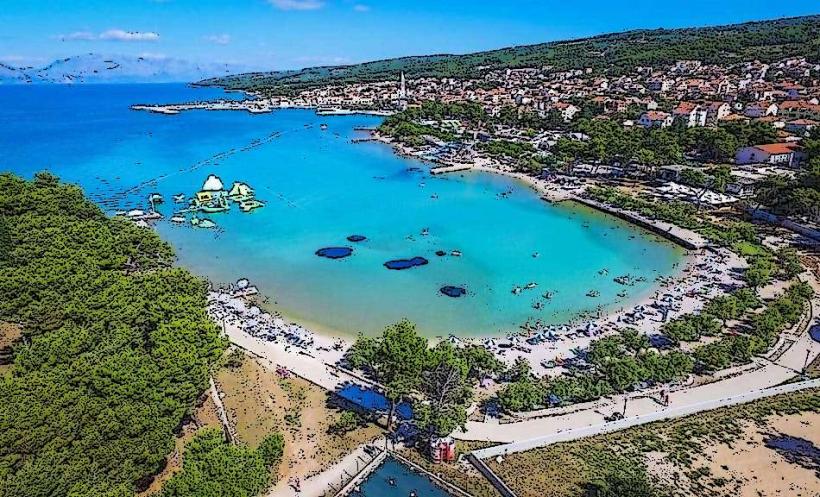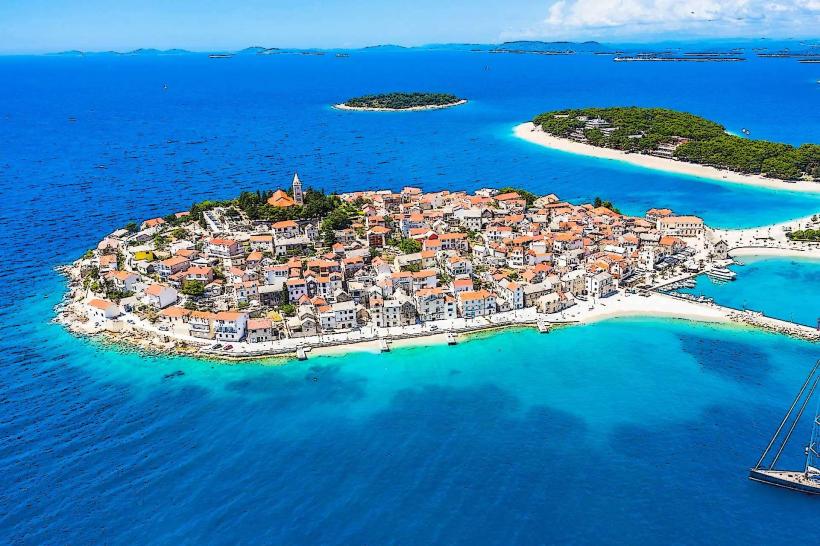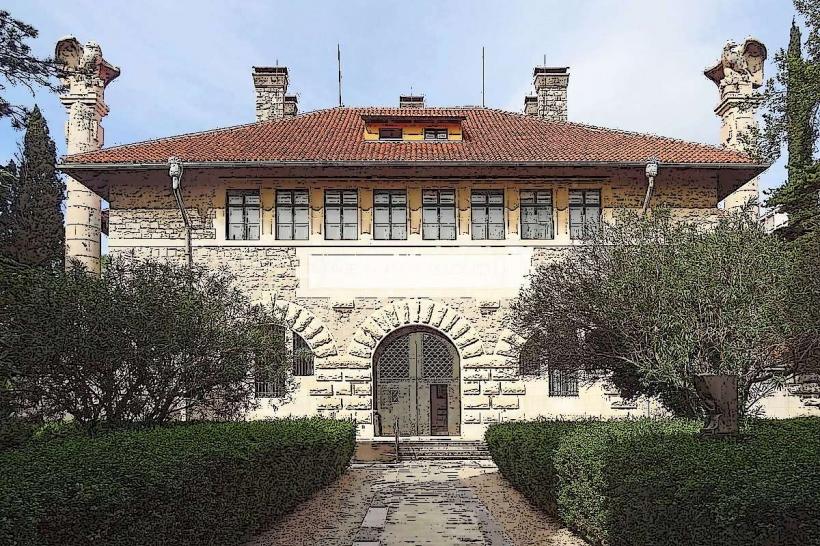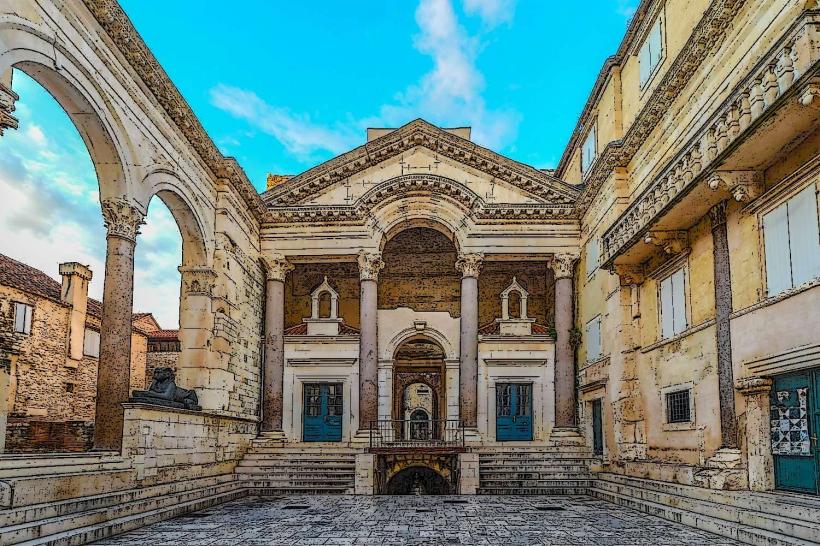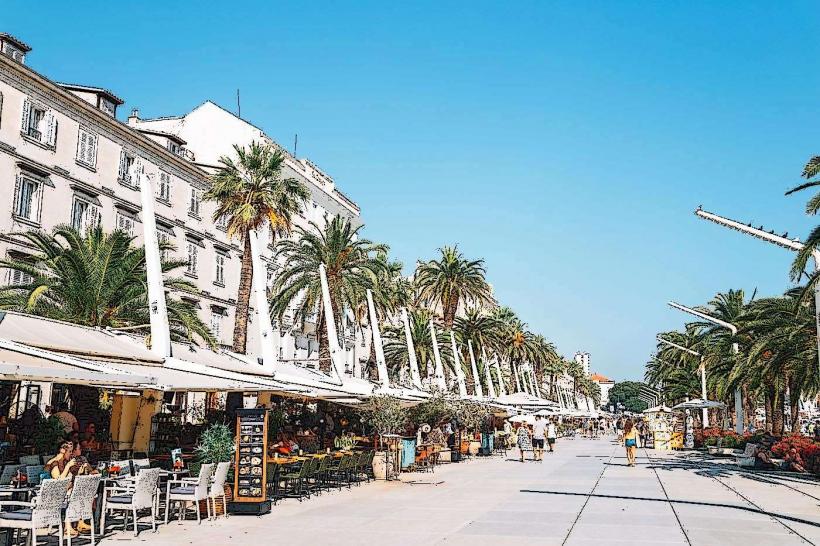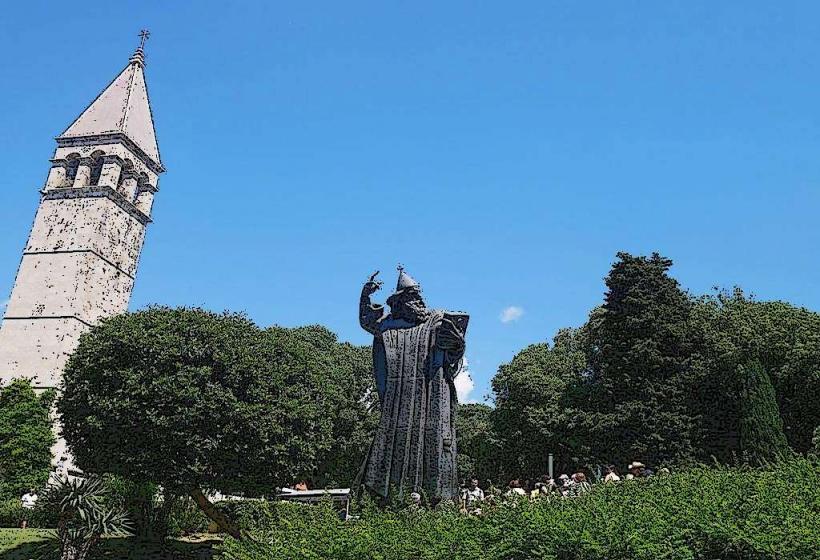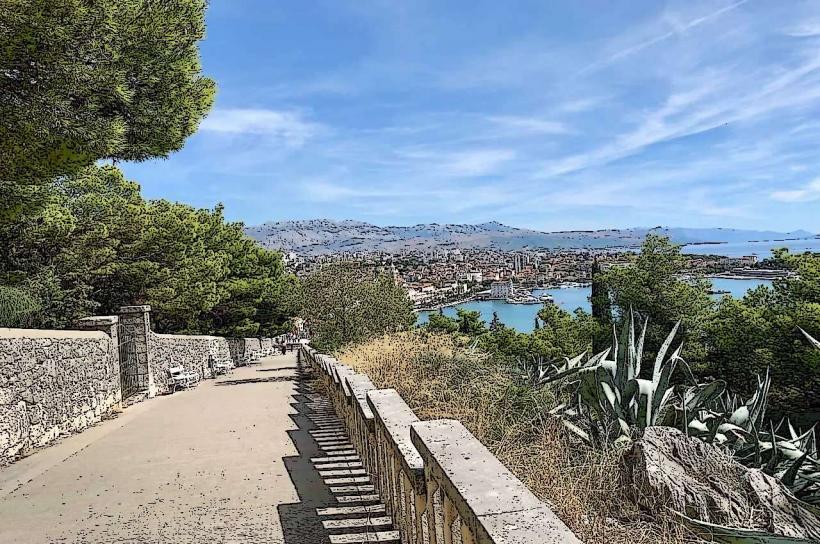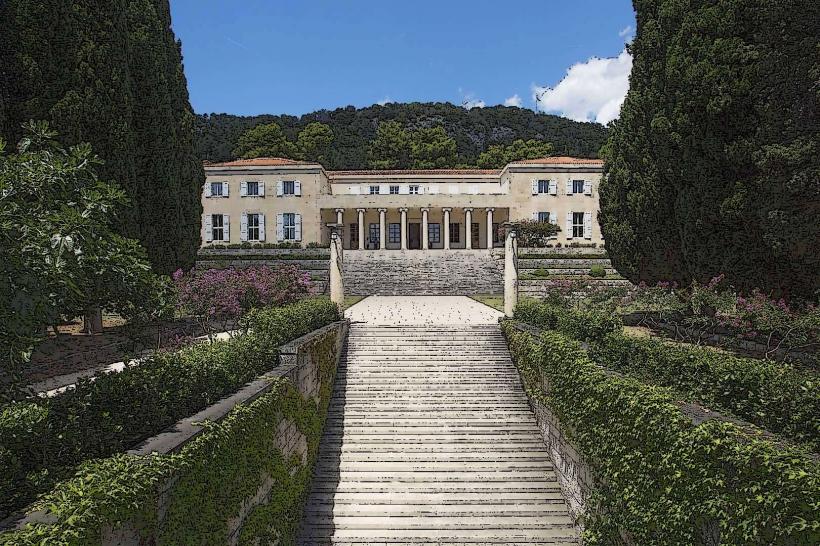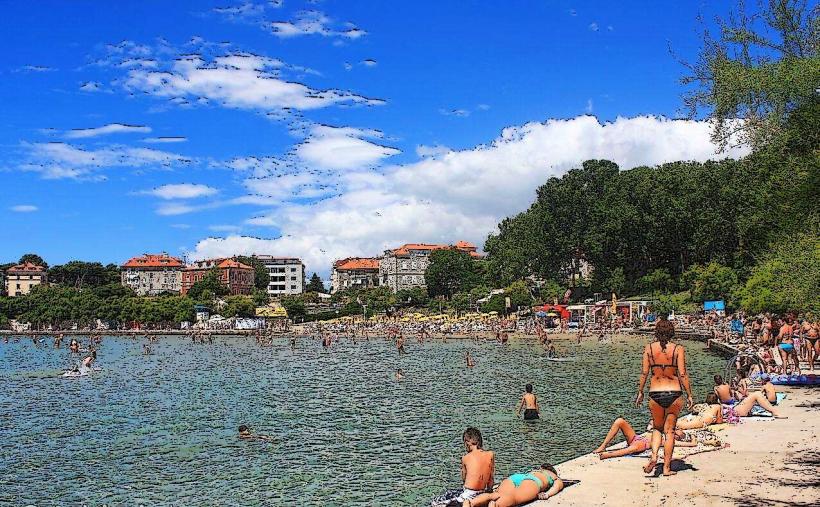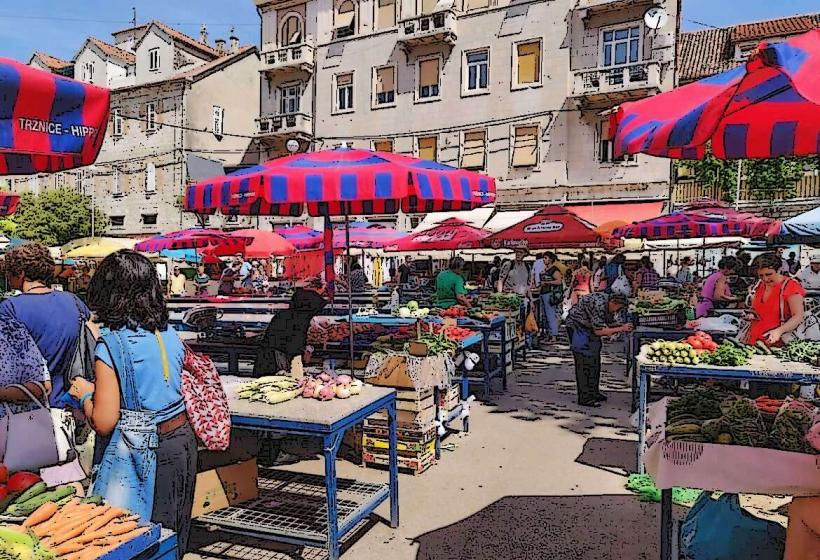Information
Landmark: Peristyle SquareCity: Split
Country: Croatia
Continent: Europe
Peristyle Square (Peristil) – Diocletian’s Palace, Split
Peristyle Square (or Peristil) is the heart of Diocletian’s Palace in Split, Croatia, and one of the most iconic locations in the entire complex. It is a vast, open-air courtyard that served as the central area for both the imperial palace and the surrounding city. The Peristyle is a Roman peristyle, a type of courtyard surrounded by a colonnade of columns, which is a key architectural feature of Roman palace and temple designs.
Historical Significance
- Roman Architecture: The Peristyle was originally built as a ceremonial entrance to the Emperor Diocletian's private quarters. It reflects the grandeur and magnificence of Roman architecture. As the most prominent space within the palace, the Peristyle was intended to showcase the emperor’s power, wealth, and divine status.
- Royal and Religious Ceremonies: It was the focal point for official ceremonial events, including audiences with the emperor, religious rituals, and processions. In the Roman world, such spaces were used for public displays of imperial authority, ensuring that Diocletian’s rule was visible and revered.
- Symbol of Imperial Power: The layout and grandeur of the Peristyle were symbolic of the emperor’s omnipotence. The statues, columns, and open space were designed to enhance Diocletian's image as a divine ruler, showing both his earthly power and his link to the gods.
Design and Layout
- Dimensions: The Peristyle is about 34 meters long and 20 meters wide, making it a spacious open area. It is lined with a colonnade of 12 columns that were originally made from white limestone and marble. These columns form a rectangular corridor that encircles the square.
- Architectural Features:
- Columns: The columns that surround the square are a mix of Greek and Roman styles. They support a structure that once held a roofed gallery (which no longer exists). The columns add to the aesthetic grandeur and harmonious design typical of Roman urban spaces.
- Sphinxes: There are two Egyptian Sphinxes at the west end of the Peristyle. These were brought by Diocletian from Egypt and placed as part of the palace’s decorative elements. The Sphinxes are well-preserved and add an exotic and monumental touch to the square.
Key Features within the Peristyle
The Cathedral of St. Domnius:
- One of the most notable buildings connected to the Peristyle is the Cathedral of St. Domnius, which was originally the Mausoleum of Diocletian. The structure was later converted into a Christian church in the 7th century, making it one of the oldest Catholic cathedrals still in use today.
- The cathedral is located directly at the center of the Peristyle, and visitors can view its Roman columns and dome from this central square. The transformation of the mausoleum into a Christian church illustrates the historical shift from pagan Roman traditions to Christian practices in the region.
The Imperial Box (Throne Room):
- At the east end of the Peristyle is an elevated platform, which likely served as the imperial throne or audience area where Diocletian would hold court, address his subjects, or receive dignitaries. From this vantage point, the emperor would have had a commanding view of the square and the people gathered there.
The Temple of Jupiter:
- Located adjacent to the Peristyle, the Temple of Jupiter is another monumental feature of the palace. Originally dedicated to the Roman god Jupiter, it has since been converted into the Baptistry of St. John the Baptist. The temple’s remains are visible from the Peristyle and add to the square’s religious and ceremonial significance.
Sphinxes and Statues:
- The Sphinxes at the west end of the square stand as relics of the Egyptian influence on the Roman Empire. They are 4,000 years old and were transported to the palace during Diocletian’s reign. These imposing statues were meant to emphasize the emperor's power and the grandeur of his palace.
Current Use and Visitor Experience
- Tourist Destination: Today, the Peristyle is a popular tourist destination and is often filled with visitors who come to admire its architectural beauty and historical significance. It is a great place to explore, relax, and take in the historical atmosphere of the ancient palace.
- Cultural Events: The Peristyle is still used for various cultural and religious events, including musical performances, theatrical shows, and religious ceremonies. Concerts and performances are sometimes held in the Peristyle, making use of its acoustic properties and dramatic setting.
- Theatrical Performances: The Peristyle’s open-air space and columned setting provide an ideal backdrop for theater productions and classical music concerts. It has been used for performances of classical opera, jazz, and folk music, adding to the vibrant atmosphere of the area.
Visiting the Peristyle
- Access: The Peristyle is located at the center of Diocletian's Palace and can be easily reached through several gates leading into the palace. It is directly connected to other important spaces within the palace, such as the Temple of Jupiter, the Cathedral, and the vestibule.
- Admission: Entry to the Peristyle is free, but if you want to explore the Cathedral of St. Domnius or the Baptistry, there is an entrance fee. The Cathedral also allows access to its bell tower, which offers fantastic views of the city and surrounding islands.
- Best Time to Visit: The square is most tranquil early in the morning or late in the evening, when it’s less crowded. However, if you're interested in seeing performances or events, visiting in the evening when concerts or festivals are scheduled is highly recommended.
Why Visit Peristyle Square?
Architectural Beauty: The Peristyle is an excellent example of Roman architecture, with its grand columns, well-preserved statues, and the combination of Roman and Egyptian styles. The square’s design continues to impress visitors, maintaining much of its ancient character.
Historical Importance: As the central point in Diocletian’s palace, the Peristyle reflects the emperor’s power, religious devotion, and wealth. It’s a direct link to the past, where imperial ceremonies and public audiences once took place.
Cultural Hub: The Peristyle is a vibrant space for modern cultural events, such as concerts and performances, which are a wonderful way to experience the living legacy of the ancient site. It is a great place to soak in the ambiance of Split’s ancient history.
Connection to Split’s Identity: The Peristyle is a symbol of Split's rich heritage and its role as a center of Roman power. It’s not just a historical site but a living part of the city’s identity and culture.
Conclusion
Peristyle Square is a must-visit when in Split, offering a perfect mix of historical grandeur, architectural beauty, and modern cultural life. Whether you're admiring the Roman columns, exploring the cathedral, or enjoying a live performance, the Peristyle provides a fascinating insight into both ancient and contemporary Croatian life.



